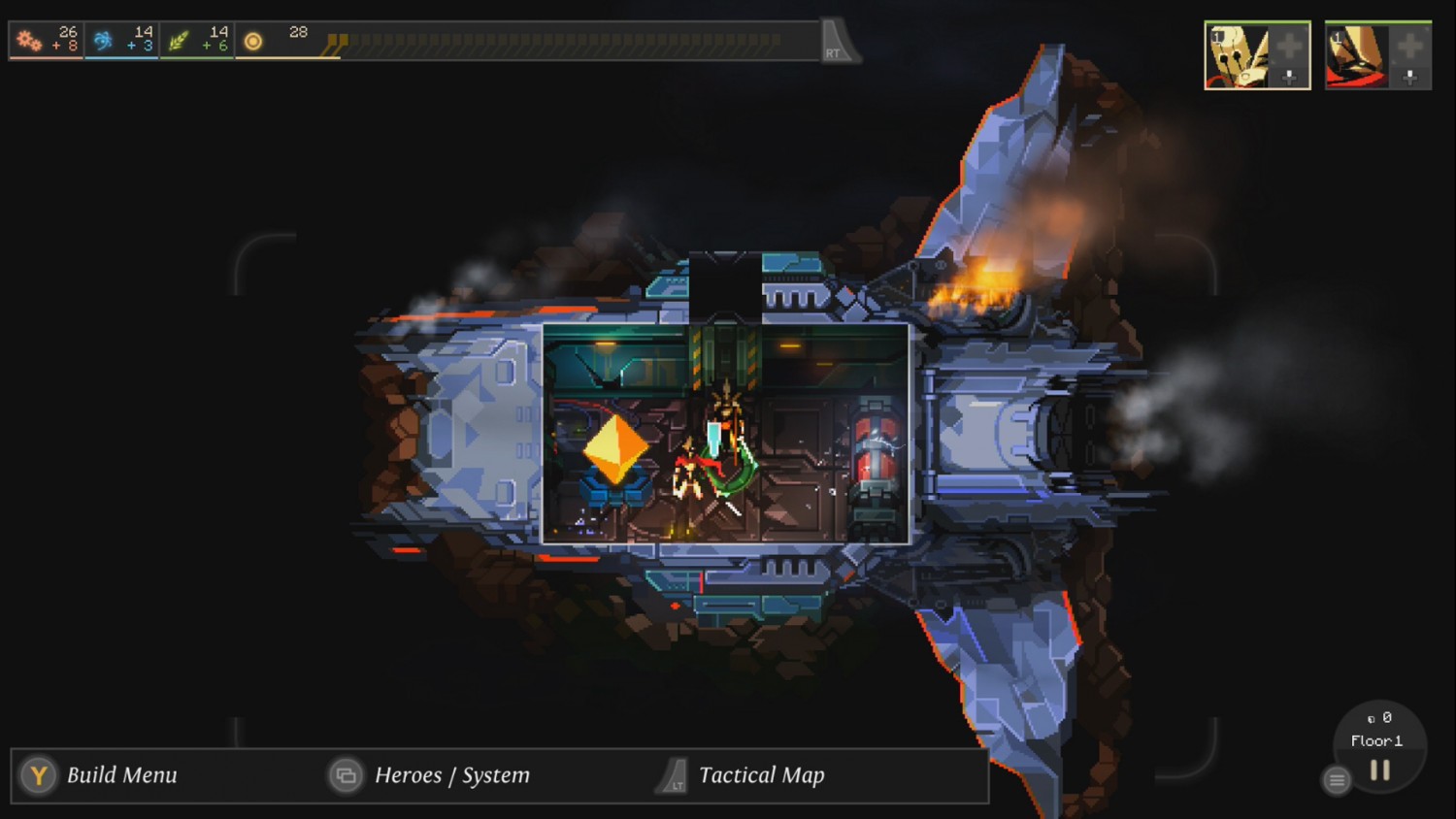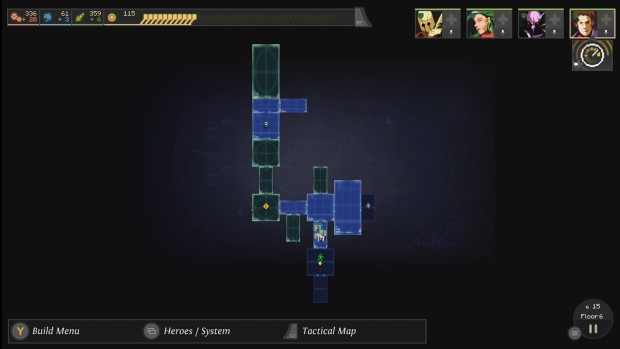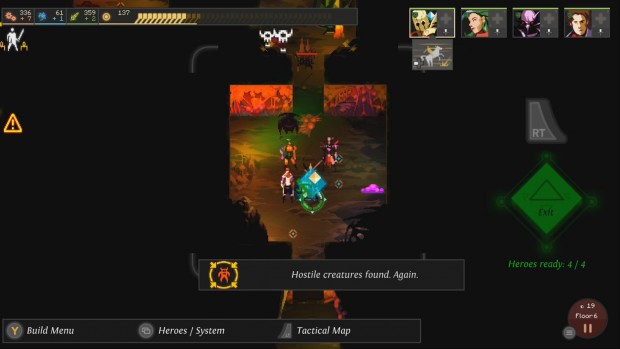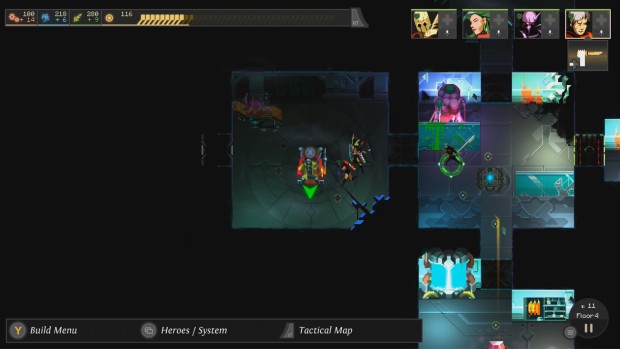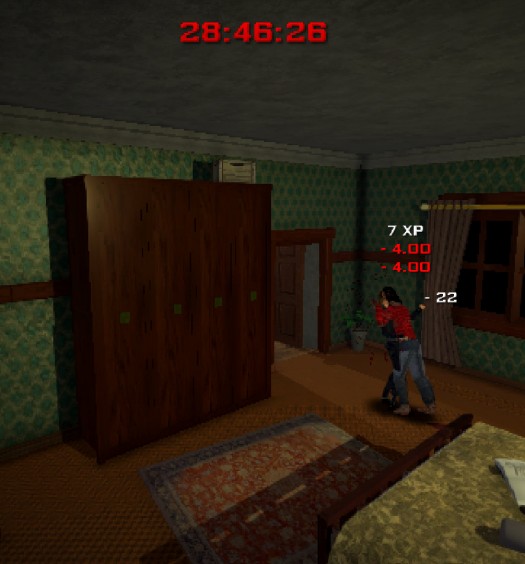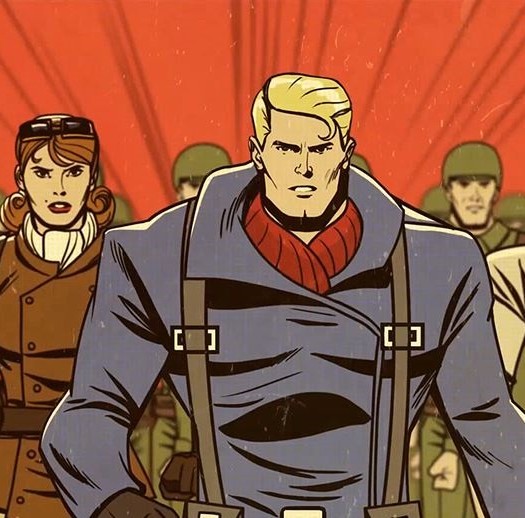It’s only been a week since I was assigned to review Dungeon of the Endless (DotE), but I must admit to being completely addicted to it already. In fact, I’ve been enjoying Amplitude Studios’ superb, strategic tower defense/roguelike (with RPG elements) so much that I’ve been completely neglecting all of the triple-A titles that I promised myself I would play during a much needed period of catching up on everything I missed in 2015. So what is it that makes DotE so interesting?
The game seems unwieldy at first, and the fact that the tutorial system is hidden inside the pause menu (and is pretty poor anyway) does nothing to ease new players into the experience. Give it some time though, and you’ll soon begin to figure out the simpler aspects of combat, survival and movement. Dedicate yet more of your precious hours, and these basic systems give way to much deeper elements of resource management and tactical decision making, both of which are made pivotal because they are literally linked to the team’s progression through levels. As each door opens, revealing anything from monsters to new characters in the room beyond, your resources get replenished according to the number of structures you control and creatures may spawn elsewhere throughout the map. It’s this ebb and flow of risk and reward that makes DotE so utterly compelling and addictive.
Here’s what I liked:
Still waters run deep — Perhaps my favourite thing about DotE is the way it layers many simplistic gameplay themes and systems on top of each other to create something that is much deeper and more complex than the sum of its parts. Each level tasks up to four heroes (two at the beginning of each playthrough) with escorting a power crystal from the starting location to an undiscovered, hidden exit. As the player(s) explore the level, opening doors as they go, monsters may spawn in locations on the map which have not been powered. Power comes in the form of dust, which is in limited supply. This means that it will likely be impossible to power all rooms on any given level, so the further you progress, the more you must consider how to defend the rooms behind you and which direction to progress in. But, progress you must, because as I said earlier, resources are only handed out when new doors are opened. With all that said, I’ve barely begun to scratch the surface of what is really going on in DotE, and there are numerous other systems of note, many of which are linked – construction, research, items, buffs, multiplayer, the interplay between characters and leveling (which I will cover in a moment) plus so much more.
Colourful cast of characters — Of all the weapons in DotE’s arsenal, my favourite one (and almost certainly the killer hook in a game like this which features permadeath and a focus on replayability) is the range, diversity and combination of characters that can make up a team. There are big, dumb killers, nurses who heal and buff the team, melee specialists who debuff enemies and scientists who influence and improve structures placed throughout the level. As always, there are certain combinations which make the job easier or harder in certain situations, but the game is so finely balanced that there is definitely no right or wrong answer. Characters can be levelled all the way up to 15, which in itself brings inherent benefits if you can spare the resources to do it. Another thing I like about DotE is the fact that you can find and recruit other heroes on some levels, including those which have not been unlocked; the kicker here is that they have to stay alive through three more levels in order to be unlocked at the start of the next playthrough, and that’s no small feat.
Out of the frying pan — I’ve indicated already that DotE is pretty tough, and it features mechanics like permadeath and supports only one save game. In addition, resources, items and character levels carry from one level to the next, and there are 13 floors to progress through before you complete the game. This has advantages if you are able to progress flawlessly early on, but mistakes made early in any given playthrough are likely to come back to haunt you. Again, this is another unexpected layer of depth in an already surprisingly complex game, but more than anything, it simply represents a hell of a challenge. Despite this approach, DotE is never unfair, and even when opening a door results in the worst luck possible with respect to the monsters that spawn (and where) it will still be your lack of preparation that leads to your downfall, rather than the systems built into the game itself.
Here’s what I didn’t like:
Fire and forget — There’s really nothing that I don’t like about DotE if I’m honest, but if I were to come up with one criticism, it is probably that the game is so tactically deep that it becomes quite easy to disconnect from the action onscreen. What I mean by this is that when I open a new door, I’ve already positioned my heroes and I know exactly what I’m going to do should enemies appear. When the fighting starts, instead of watching the action, I’ll watch the top right hand corner of the screen to ensure I hit the heal button or activate a skill as soon as the cooldown timer is over. I’m OK with that, but if you’re looking for a more direct action game, then DotE may not be for you.
Wrap-up
You may have guessed by now that I’m a big fan of Dungeon of the Endless, but more than that, I think it’s probably the best indie game I’ve played on Xbox One for a very, very long time. As a result, I recommend it wholeheartedly to almost everyone, with the only caveat being that if you really dislike the sound of all these interlinking systems and the very controlled pace that DotE is built upon, then you might want to try it first. For anyone who is undecided, there is a ton of both single and multiplayer content here, and it really is top notch, so more than ever before, I’d urge you to take the plunge and invest your hard-earned cash into this excellent, innovative indie title.
Score: Buy It
Dungeon of the Endless was produced and published by Amplitude Studios and will release on March 16th, 2016 on Xbox One, priced at $9.99. A copy was provided for review purposes.

